Devotedly working to channel your deepest emotions into building your passions and relationships can be an equally daunting and rewarding experience. But with his new independent horror thriller, ‘The Visit,’ writer-director-producer M. Night Shyamalan has intriguingly proved that unabashedly committing to your unique ideas in your work and fully embracing your connections can truly help you build your distinct vision.
‘The Visit,’ which is set to be released tonight in theaters, united the filmmaker with Jason Blum, who helped produce it through his production company, Blumhouse Productions. The producer encouraged the scribe-helmer to uninhibitedly showcase his abilities as a captivating storyteller in a low-budget independent film. As a result, Shyamalan made a compelling horror thriller that enthrallingly mixes found-footage and mockumentary elements to focus on the idea that families should never give up on their bonds as they strive to obtain their personal and professional goals.
‘The Visit,’ which brings the Academy Award-nominated writer-director back to his glory days as a filmmaker in his early career with such works as ‘The Sixth Sense’ and ‘Signs,’ had its New York City premiere this past Tuesday night, September 8. Shyamalan, Blum and the horror thriller’s actors hit the red carpet, and stayed for a post-screening Q&A, at Regal Cinemas Union Square. The cast and crew generously discussed the process of collaborating together on the family-driven film that thrives on the characters contending with their diverse affections as they strived to achieve their goals.
‘The Visit’ follows 15-year-old Becca (Olivia DeJonge), who’s an aspiring documentarian, and her 13-year-old brother Tyler (Ed Oxenbould), who relies on freestyle rapping to express his feelings, as they say goodbye to their mom (Kathryn Hahn), who embarks on a weeklong cruise with her boyfriend, Miguel (Jorge Cordova). The teens ride the train to a rural Pennsylvania town to see their mother’s parents, Nana (Deanna Dunagan) and Pop Pop (Peter McRobbie), for the first time. The siblings have never met their grandparents before, as their mother left home when she was 19 to marry her high-school English teacher (Benjamin Kanes). Even after her separation, she never repaired her estranged relationship with them.
Becca plans to turn the experience into a documentary to not only mend the relationship between her mother and grandparents, but also fix the emotional that both she and Tyler are contending with in the wake of their parents’ relationship ending. But once they arrive at their grandparents’ house, the siblings slowly begin to realize there’s something physically and emotionally wrong with Nana and Pop Pop. From Nana’s habit of roaming the house at night, vomiting on the floor and scratching at the walls, to Pop Pop attacking a stranger on the street and regularly dressing in formal wear for a costume party that he never attends, Becca and Tyler start to use her cameras to prove that perhaps their mother was right to leave home.
Speaking about his working relationships with Shyamalan and the rest of the cast and crew when he stopped to talk on the red carpet, McRobbie revealed “Night is great to work with, and the two kids were great. Deanna and I got along well…For such a serious film, we had a lot of laughs.” The actor added that like audiences who enjoy the horror thriller genre, everyone on the film was interested in, and enjoyed, exploring what causes people to act in such disturbing ways. He also noted that he thinks it’s human nature to want to be scared when enjoying their entertainment. “It’s the filmmakers and actors’ jobs to keep that emotion up while making this type of movie,” the actor explained.
“The movie is mysterious. In the beginning of the film, the grandparents are very loving…But day by day, as the movie goes on, my (character’s) wife and I bring on a few more scares, and they become a little bit stranger,” McRobbie also disclosed when further divulging why viewers will be intrigued by ‘The Visit’s story.
Dunagan agreed with her on-screen husband that “Audiences are attracted to horror thrillers like ‘The Visit’ because they like to be scared.” The performer, who’s most well known for her work as a stage actress, including her Tony Award-winning portrayal of Violet Weston in ‘August: Osage County,’ revealed she really enjoyed making the film because they approached it as though they were putting on a play.
But Dunagan also admitted that playing the grandmother in ‘The Visit’ proved to be a big challenge, because the character is “deeply troubled.” But she asserted that she had a great time playing the role, because “there’s part of the grandmother that’s so sweet and loving.”
‘The Visit’s Australian teen performers, DeJonge and Oxenbould then stopped to discuss their experiences acting in the horror thriller. The actress admitted that she and her on-screen brother “didn’t know anything about the project when we were first approached. We both auditioned and got the parts, and then received the script…As soon as we heard M. Night was involved, we said yes.” The actor added that they both immediately jumped at the chance to work with the filmmaker.
“As soon as we were cast, we started working together, and instantly bonded,” DeJonge also noted about working with Oxenbould on the film. The actor added that once they began shooting the independent horror thriller, “We were always hanging out, because we also had to go to school, and we were part of the same school.” The actress added that they would also cook together over the weekends. “We got along really well on the set, so it was as though we were actually brother and sister,” she explained.
DeJonge also reiterated their on-screen grandfather’s testament that the entire cast and crew had fun together while they were shooting ‘The Visit.’ Since the movie is presented as a found footage documentary, “We had a lot of rehearsals and practicing with Night and the film’s cinematographer (Maryse Alberti),” she said. She then also admitted that McRobbie and Dunagan “were such a blast to work with on the set. I learned so much from them.” Oxenbould added that the two are fantastic actors, and were “really freaky” as Tyler and Becca’s grandparents, before the cast and crew went into the theater to watch the film’s premiere.
When Shyamalan and Blum later participated in the post-screening Q&A, the producer was first asked why he decided to participate in the production of the independently-financed ‘The Visit.’ “This man makes the most awesome movies ever,” Blum said of the writer-director. The producer added that he has always been a big admirer of the filmmaker.
Blum then fully explained how he became involved in working with Shyamalan on ‘The Visit.’ “I called him out of the blue and said, ‘I love your movies. I want you to try a low budget movie.’ He was very nice, and we had a good conversation about it.” When Blum didn’t hear back from Shyamalan after that conversation, he said: “I tried again about three months later. I then went to Philadelphia (where the writer-director lives), and explained that we have this great system to make low-budget movies, and offer creative control to the filmmakers.”
About a year after his visit to the director’s home city, Blum admitted that he had all but given up on working with Shyamalan on a film. “But then I received an incoming call, and it was from Night. He said, ‘Guess what? I made a low budget movie.'” When the producer then asked the filmmaker how he could make a low-budget movie without him, he answered by saying, “I did it all by myself.”
Blum added that when Shyamalan then showed him ‘The Visit,’ “I was blown away by how awesome and fun it was. We then teamed up at that point, which is also how I became involved in ‘Paranormal Activity’ and ‘Unfriended.’
When then asked why he decided to change the feeling behind found-footage films, Shyamalan answered that “The (movie’s) tone of first-person documentary, which goes from found-footage to documentary…is a very strong flavor. In my opinion, it has only been done fantastically twice before-in ‘The Blair Witch Project’ and ‘Paranormal Activity.'” The writer-director admitted that in general, the mixed tone is overused and replaces actual filmmaking. “But to use it in great discipline (helps make it work),” he added.
“There’s no score in the film,” Shyamalan then revealed. “There isn’t any scary music. All the screams came from the audience.” The viewers’ reaction to ‘The Visit’ comes from all filmmakers’ aspiration to make their audience become in sync with their movie’s characters. “Shows like ‘Modern Family’ and ‘The Office’ are using that same style, which can be used to create humorous and other reactions,” the director added.
Blum then jumped in to state that he thinks “there’s a big difference between found footage movies, which if they’re done well, are purposefully sloppy,” and such first-person documentary-inspired films as ‘The Visit,’ which artistically capture things in the background. “I would call this film a mockumentary, as opposed to found footage,” the producer also admitted. “That might seem small to other people. But there’s a big difference when you’re trying to make a film look haphazard, as opposed to being composed, like with this one.”
Shyamalan was then asked about his process of creating space and time, as well as cause and effect, in his films. The director answered by saying, “I do long takes, (instead of) coverage,” which is when filmmakers show different angles and shots of all the characters in each scene. “Since my narratives use those long takes, I tend to lean on theater-trained actors, or actors who have the capacity to lean into their performance,” Shyamalan explained. The film “was like a play among the five lead performers. Obviously, I asked them all to do outrageous things,” Shyamalan added.
“There’s a rhythm of how things unfold when the mystery starts,” Shyamalan continued in his explanation. “You have to set up the (film’s) characters and plot, as well as solve complications, in two hours. That’s different from how a story unfolds on TV,” the director admitted, before referencing his sci-fi mystery series, ‘Wayward Pines,’ which he executive produced and directed for Fox this past spring. “On TV, you have much more time to develop the characters. You don’t have the oppression of the plot,” Shyamalan further explained. “So it’s a bit of pressure to get the characters’ personalities into a film.’
Shyamalan also noted that “There has always been a pressure of choosing between artistic and commercial work. You can make an incredible arthouse movie like Jason did with ‘Whiplash,’ which was my favorite movie of last year…But trying to include depth of character and complications, while still honoring the plot, is exhausting.” But the writer-director emphasized that he loves mixing the tension between the two.
“We shot the movie sequentially and very quickly, because it’s a small movie,” Shyamalan added. Even though they had a short shooting schedule and shot independently, the filmmaker also said that he felt it was important to have rehearsals with the actors. “Since I wrote (the script), I really talked through every beat, no matter how fantastic or gruesome,” he noted, before also noting that he discussed the motivations of each of the characters with the cast.
That was certainly the case with the characters of Nana and Pop Pop, who “can’t think of themselves as crazy; that’s not a motivation. They’re thinking of something very specific, and then their actions are justified. They have to have a value system, but it’s just not our value system,” Shyamalan explained. He added that he thinks Dunagan and McRobbie gave fantastic performances as the grandparents, particularly in showing their distinct values.
During the film’s rehearsals and shoot, “I also pushed the kids a lot. They guessed that we averaged about 30 takes,” Shyamalan admitted. Blum then asked the filmmaker if any of the scenes in ‘The Visit’ were improvised, to which the helmer admitted they always stuck to his script. The producer was amazed at that process, as “Most found footage movies don’t have a full script. Most just work off of outlines,” he explained.
Shyamalan crafted the full script for the horror thriller, as he felt it was important to get truth and depth from the actors. “I don’t like personalities, like ‘Oh, they’re charming kids and superstars,’ and they lean into their charm,” the director revealed. “That’s just surface stuff. If an actor has a (general) anger, that’s not good enough. They have to have the character’s anger.”
The filmmaker then stated that he’ll sometimes tell his actors, “That was you getting angry. Not let’s get (your character’s) anger. Let’s show (the character’s) pivot of anger, not your generality of anger.”
Shyamalan also admitted that he has “crazy rules on my sets. I don’t let the actors listen to music (during filming on the set), because I don’t want them to get juiced up from someone else’s emotions.” He explained that the actors might initially get hyped up in their performances as a result to listening to music. But by the 25th take, he feels the actors aren’t going to be able to get those feelings back.
Blum then confessed that Shyamalan’s approach to shooting ‘The Visit’ surprised him, as “that’s not the typical way you make a found-footage movie.” Since the independent films he often produces “don’t always have the money to utilize special effects, multiple locations or 500 speaking parts, what you really have is story and performance.” The producer felt like the way the director utilized his story and cast’s abilities was what made ‘The Visit’ work.
“I’m going to sing your praises now,” Shyamalan then told Blum. “There are very few champions of the original voice out there left. Jason goes out and finds those movies that the system may overlook without him saying, ‘Look again.’ He does it instinctively, and doesn’t realize it’s an amazing trait.” The director then explained that inclination is the reason he approached the producer with the horror thriller, as he would know if there was something worthy in the film.
“When you’re involved in making decisions for a film on very expensive investments, you have to look back,” Blum explained. “So when a studio greenlights a movie, they have to say, ‘It feels like this success,'” and they’re always looking to compare potential projects to past films.
“The lucky thing about making a low-budget movie is that you can do the exact opposite” of what the studios do, Blum also noted. He also explained that while in his staff meetings, he and colleagues want to choose projects that don’t feel familiar to movies that audiences have already seen before.
“One of my favorite things about my job is taking a project that people would ask why it would play on 3,000 screens, and proving that it can succeed” in that market, the producer added. “When the risk is lower, you can try new things, and that’s one of the reasons why I love doing low budget films,” Blum added.
Shyamalan concluded the Q&A by revealing some details about his next project. “I just finished writing another independent thriller that I’m going to shoot this fall. ..I wanted to make another small film, because I felt like I was in a good head space, and a creative place of purity,” the director divulged.
Check out photos of Shyamalan, Blum, Hahn, DeJonge, Oxenbould, Dunagan and McRobbie, courtesy of Astrid Stawiarz for Getty Images North America, below.
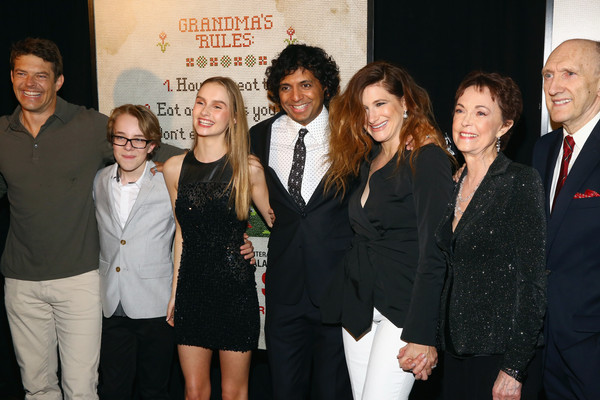
(Photo Credit: Astrid Stawiarz/Getty Images North America)
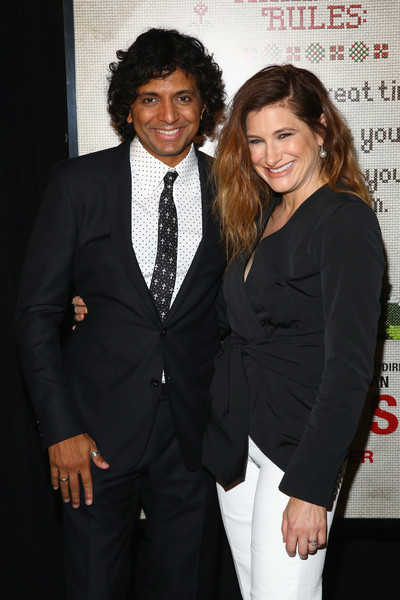
(Photo Credit: Astrid Stawiarz/Getty Images North America)
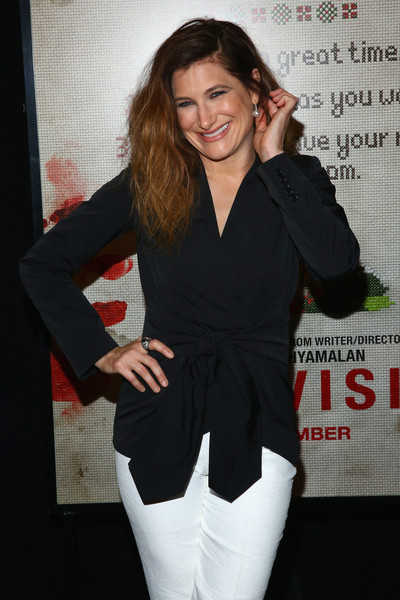
(Photo Credit: Astrid Stawiarz/Getty Images North America)
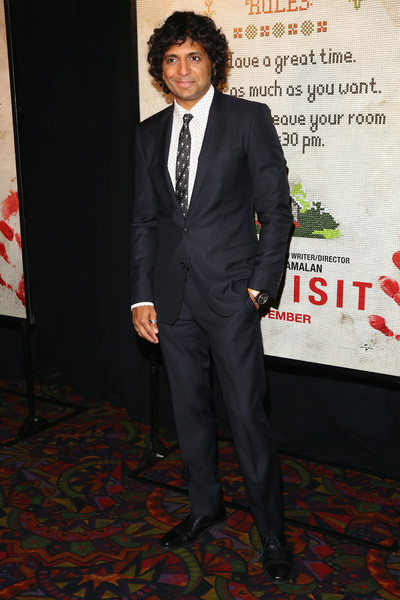
(Photo Credit: Astrid Stawiarz/Getty Images North America)
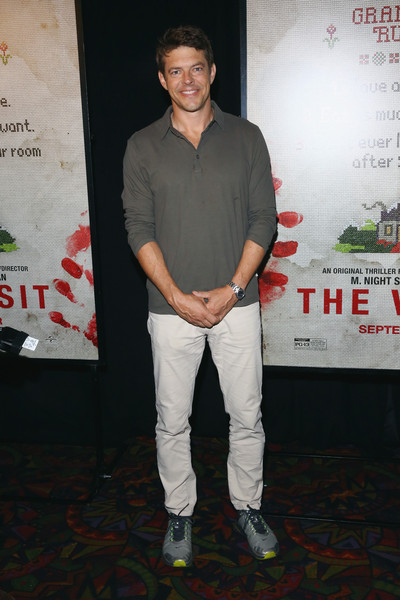
(Photo Credit: Astrid Stawiarz/Getty Images North America)
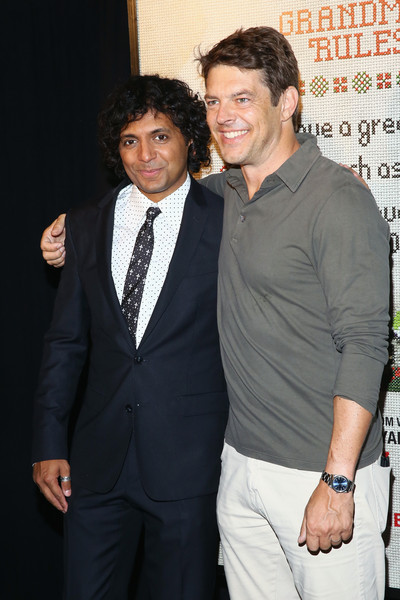
(Photo Credi: Astrid Stawiarz/Getty Images North America)
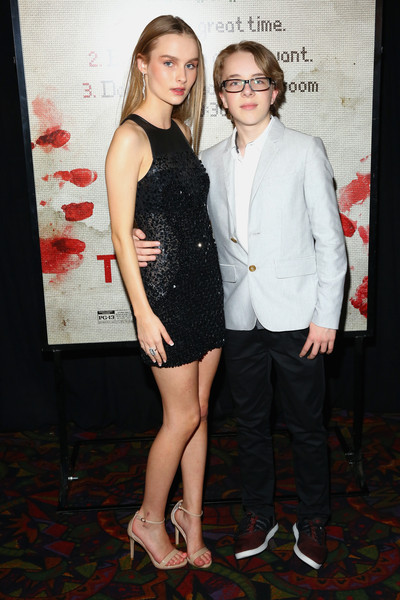
(Photo Credit: Astrid Stawiarz/Getty Images North America)
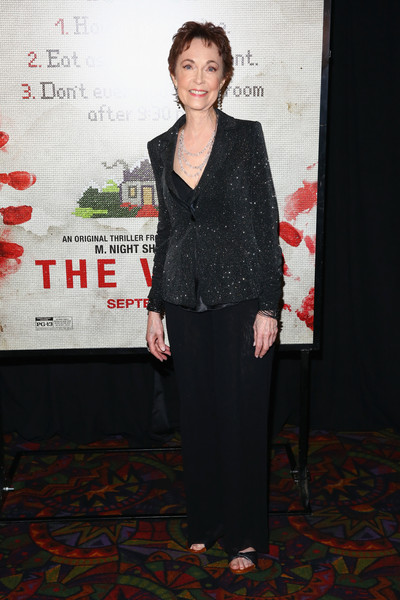
(Photo Credit: Astrid Stawiarz/Getty Images North America)
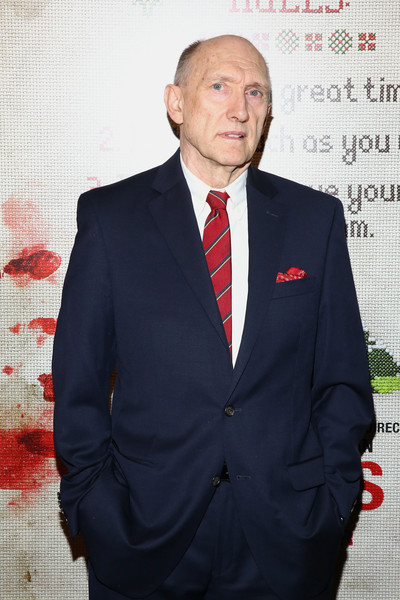
(Photo Credit: Astrid Stawiarz/Getty Images North America)
Written by: Karen Benardello
